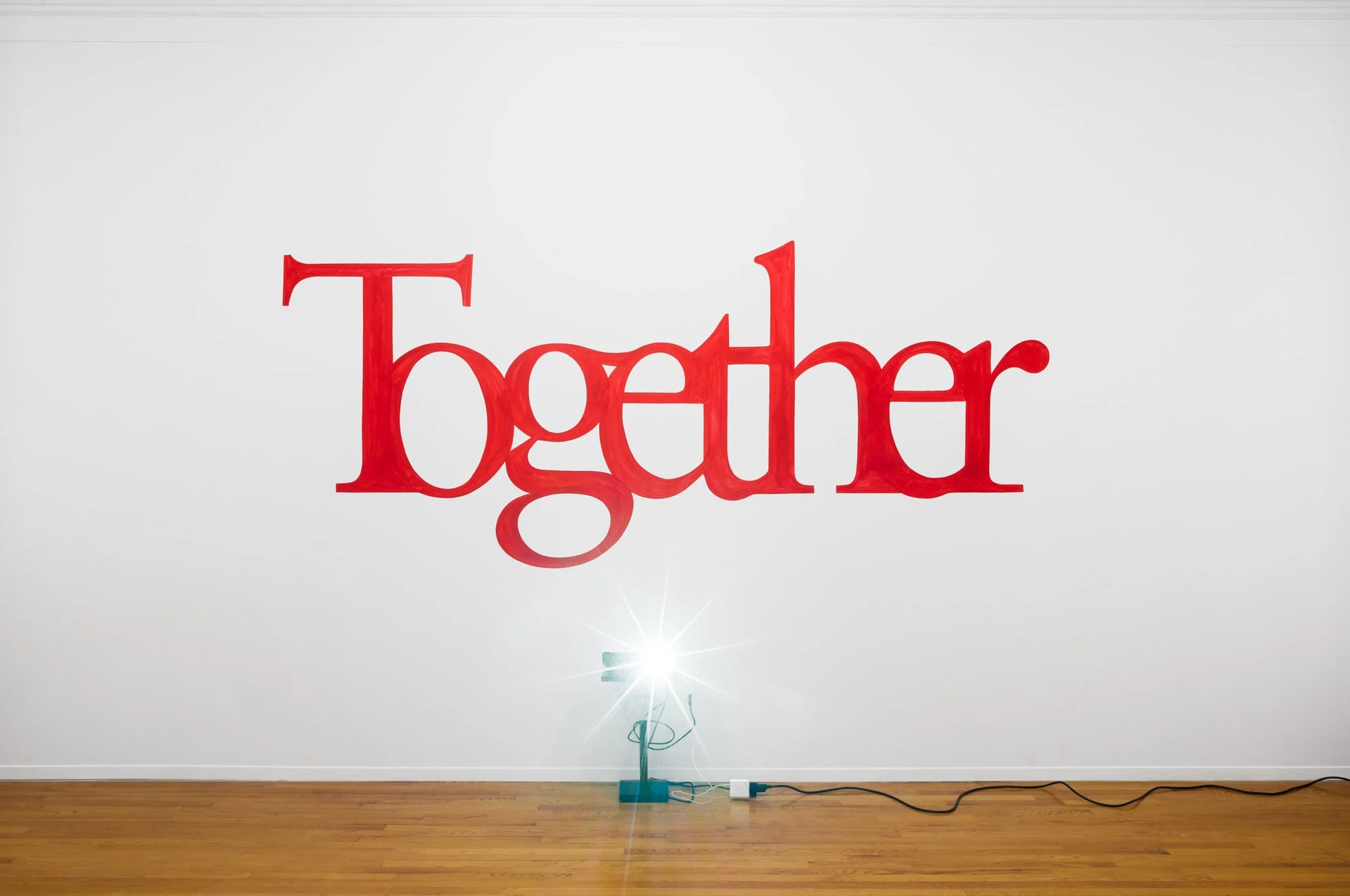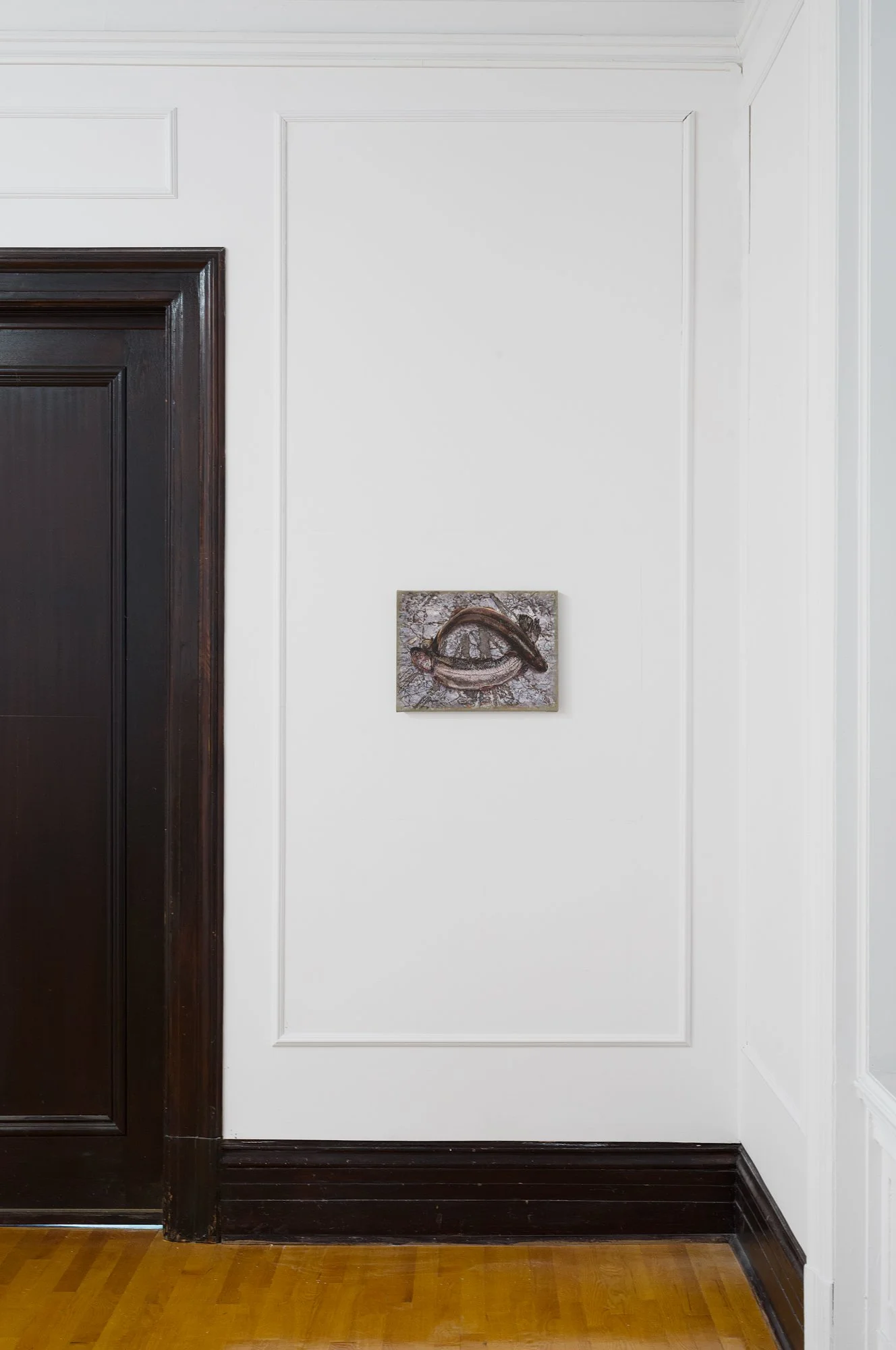Dreamachine
Artists: Alli Melanson & Jackson Slattery
Dates: November 13 to December 20, 2025
Opening: Thursday, November 13, 5–7 pm
Venue : Pangée, 1305 ave des Pins Ouest, Montreal
-
Shall I read the one which is here? The text? It starts with two or more independent.
Here we go. Three, two, one. Two or more independent autonomous oscillators with differing rhythms or frequencies when situated in proximity where they can interact-
Sorry, can you start again from situated? Yeah. Situated in proximity where they can interact for long enough, influence each other mutually.
New sentence. They adjust until both oscillate with the same frequency. Christiaan Huygens discovered the phenomenon in 1655 during an experiment with pendulum clocks: He set them each in motion and found that when he returned the next day, the sway of their pendulums had all synchronized. Other examples include the cyclic synchronization of two electric clothes dryers placed in close proximity and the biological entrainment evident in the synchronized illumination of fireflies.
One second. Can you read from entrainment of synchronized, that part? I think close proximity was the last word.
And the biological entrainment evident in the synchronized illumination of fireflies.
Synchronized fireflies. Okay. New paragraph.
The term entrainment has been used to describe a shared tendency of many physical and biological systems to synchronize their periodicity and rhythm through interaction.
This tendency is specifically pertinent to the study of sound and music. The most familiar example of neuromotor entrainment to acoustic stimuli is observable in spontaneous foot or finger tapping to the rhythmic beat of a song.
That's the end of the paragraph. So there's three paragraphs to go.
Brain wave entrainment is a term used to denote the way in which the aggregate frequency of oscillations produced by the synchronous electrical activity in ensembles of cortical neurons can adjust to synchronize with the periodic vibration of external stimuli such as a regularly repeating pattern of intermittent sounds perceived as rhythm or of a flashing light. Light flashing. Light flashing on the eye between 8 and 13 flashes per second induces alpha wave activity in the brain - a state in which people are susceptible to suggestion but which is also associated with dreaming.
New paragraph. Experiments with flickering lights were conducted in the 1940s by William Grey Walter who used high-powered stroboscopes and trigger feedback techniques where flashes synchronized with the brain's rhythms to temporarily, and then this is in quotes, transform a brain into a different sort of brain. End quote. Walter found that time itself could become lost or disturbed. He observed of one subject, quote, he had the sense of having been pushed sideways in time by flicker. Full stop. Yesterday was no longer behind and tomorrow was no longer ahead.
Okay, new paragraph. In 1959, Brion Gysin and Ian Somerville invented the dream machine, a stroboscopic flickering light device that produces visual stimuli.
Wait a sec. Can you start back from stroboscopic? Yes. Stroboscopic flickering light art device that produces visual stimuli described as, quote, the first art object to be seen with the eyes closed, end quote, and intended to affect the viewer's brain alpha wave activity. Users often report seeing shapes and colors. Some have full blown hallucinations, others mystical experiences. This effect may sometimes be quite intense but to escape from it, one only needs to open one's eyes.
Last paragraph. The mind machine stuff is super interesting in relation to early techno slash rave culture. Not only the skill of syncing two tracks on analog systems, as mentioned in the brain entrainment.
Wait, techno rave culture. Syncing two tracks on analog… Not only the skill of syncing two tracks on analog systems, as mentioned in the brain entrainment, but also in the stroboscopic. Strobe lights were, in my opinion, the most important / effective visual aid to electronic music and ecstasy, a perfect trifecta.
Wait, wait, wait, strobe lights were, in my opinion, the most important slash effective? Yeah, slash important slash effective visual aid to electronic music. Electronic music. And ecstasy, a perfect trifecta.
Even that phrase altered states of consciousness and versions of it was so prevalent in early rave culture, whether emblazoned on flyers, literally repeated in tracks, etc. The first track, the first track, the first techno track that I ever took notice of was Higher State of Consciousness by Josh Wink in 1995.
- Text by Alli Melanson & Jackson Slattery
Photos by Atlas documentation

























